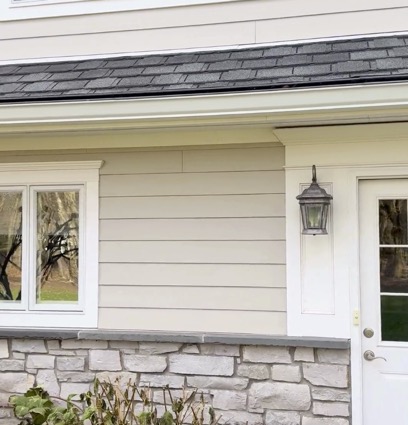Roofs covered with vegetation have been around since 500 B.C. At that time, one of the Seven Wonders of the World, the Hanging Gardens of Babylon, included stone arches and reed roofs covered with plants and even trees.
More recently, during the 1800s, Great Plains homesteaders relied on sod roofs to protect them from precipitation and temperature extremes. The idea was born of necessity – the treeless expanse offered almost no other options. Although green roofs have been trending in recent years, fewer than one percent of today’s commercial roofs are “green.”
Types of Green Roofs
Today’s green roofs typically feature vegetation growing in a layer of soil covering a waterproof single-ply membrane, a drainage layer, and insulation. So-called “extensive” green roofs include large areas of grass, ground cover or other low-growing vegetation. They require modest roof maintenance. On the other hand, “intensive” green roofs require extra attention because they are essentially rooftop gardens. Some of these green roofs even include vegetables and/or herbs that are harvested for human consumption.
Proper installation of the membrane is very important when soil and vegetation cover it. For example, leaks can be more difficult to diagnose and repair. However, the soil and vegetation absorb damaging UV rays while modifying the temperature of the membrane itself, so green roofs may potentially double the lifespan of the waterproof membranes beneath them.
Advantages of Green Roofs 
Commonly cited green roof benefits include:
- Lower building cooling loads
- Positive impact on the urban heat island
- CO2 sequestration
- Roof membrane protection
- Reduced stormwater runoff
- Aesthetic value
- Recreational/relaxation benefits
Let’s take a closer look at five of the most significant green roof benefits.
1. Environmental advantages
Vegetation absorbs UV radiation, converting heat into water vapor in the process. Just as sweat evaporating from your skin cools you, so too does a green roof have a cooling effect. Also, leaves take in carbon dioxide and release oxygen during photosynthesis.
In general, green roofs attract more interest in densely populated areas where the urban heat island effect is more pronounced. For example, roofs cover about one-fifth of the surface area of New York City. The NYC Department of Design and Construction (DDC) published the “DDC Cool and Green Roofing Manual” to detail the need to counter this effect. Hotter cities produce more air pollution, and intense heat waves can prove deadly.
2. Energy savings
In the summer, the direct absorption of sunlight potentially reduces cooling costs. In the winter, the soil serves to further insulate the roof, potentially reducing heating costs.
One study compared the median daily temperature change of an unprotected membrane versus intensive and extensive green roofs. In the summer, the median temperature of the unprotected membrane changed by 48 degrees C. The temperature of the membrane under the intensive and extensive roofs fluctuated one and five degrees C, respectively.
One of the most commonly cited green roof benefits is the potential for energy savings. Compared to traditional black flat roofs, the “green” version can significantly reduce energy costs. Although green roofs cost more to install, researchers at Carnegie Mellon University concluded that “commercial building green roofs are competitive when social benefits are included.”
Higher-cost green roofs can double the cooling effect of white roofs, but break-even points may not be reached for as much as 70 years. In general, white TPO, EPDM and PVC roofs reduce energy costs in the most cost-effective manner.
3. Reduced stormwater runoff
An article published by the British Columbia Institute of Technology (BCIT) discusses green roof benefits. The reduction of stormwater runoff is particularly beneficial when heavy rains strike. It is also somewhat cleaner than runoff from a membrane roof.
A 2009 collaborative effort by researchers from Penn State University and the National Risk Management Research Laboratory in Edison, NJ, concluded that “green roofs are capable of removing 50 percent of the annual rainfall volume from a roof through retention and evapotranspiration.”
Also, green roof systems often filter impurities out of stormwater. Sometimes, this may improve the rainwater enough to make it suitable for recycling and irrigation on the property.
4. Recreational and other uses
When there is easy access, it is possible to improve staff morale by allowing meetings and lunch breaks on the green roof. Fresh air and relaxation may even improve productivity.
5. Aesthetic considerations
Green roof benefits include aesthetic considerations. For example, a 16,000 sq ft green roof at Unilever’s corporate headquarters in Englewood Cliffs, NJ, is visible from conference rooms and executive office space. The green roof was installed over a membrane after existing roof leaks were detected and eliminated. The company’s commitment to sustainability was another key consideration during the decision-making process.
Contact Us Today
CRS is a leading NJ-based commercial roofing contractor that has installed some of the largest roofing systems in the country. Let us put our four decades of experience to work for you. We have the experience and expertise to resolve almost any commercial roofing issue.
The CRS team excels at designing customized roof systems for commercial clients. We’d welcome the opportunity to take a look at your roof, whatever your need may be. No project is too large or too small. To arrange for a visit from our certified roof inspector, please contact us today!








